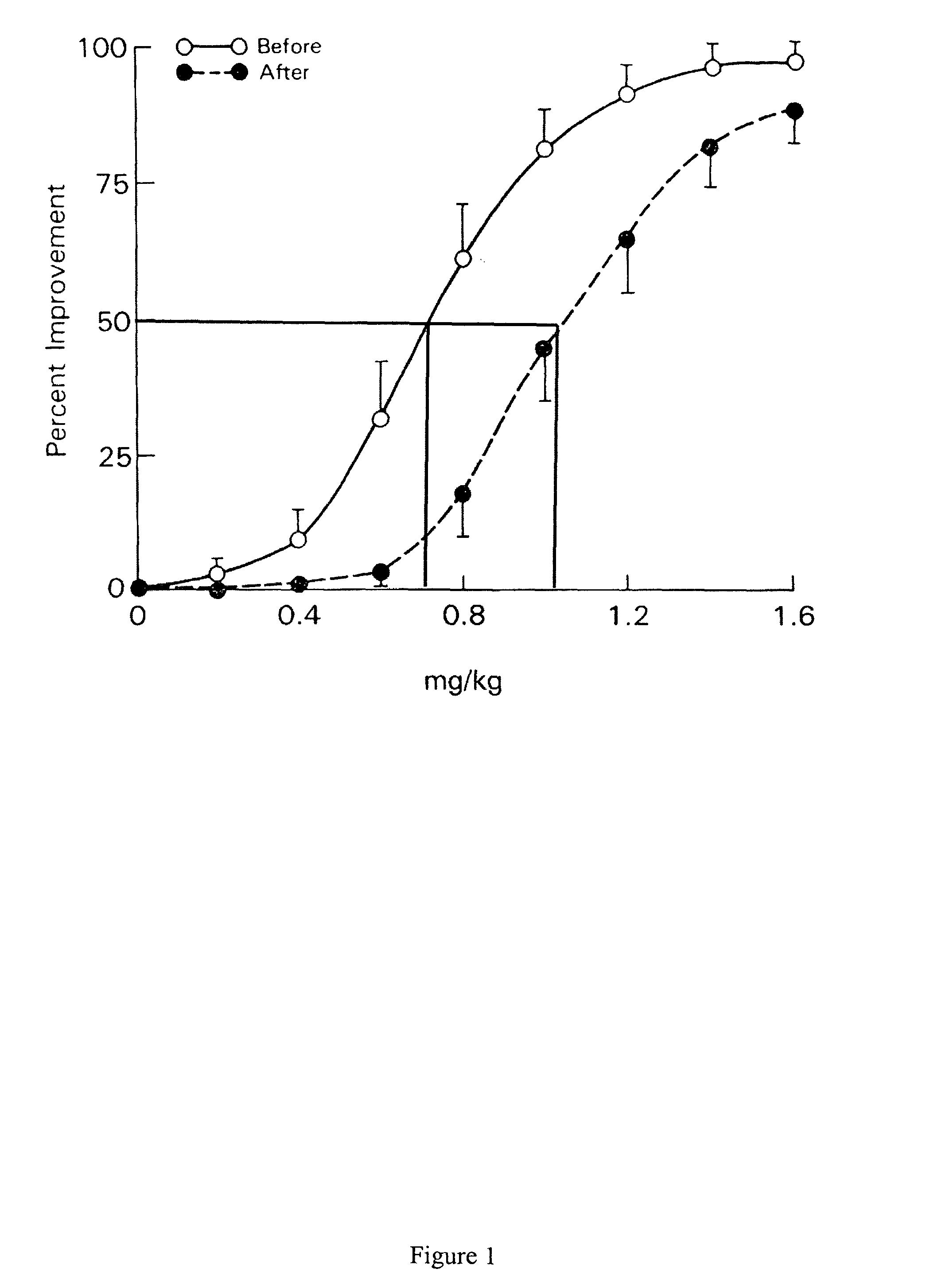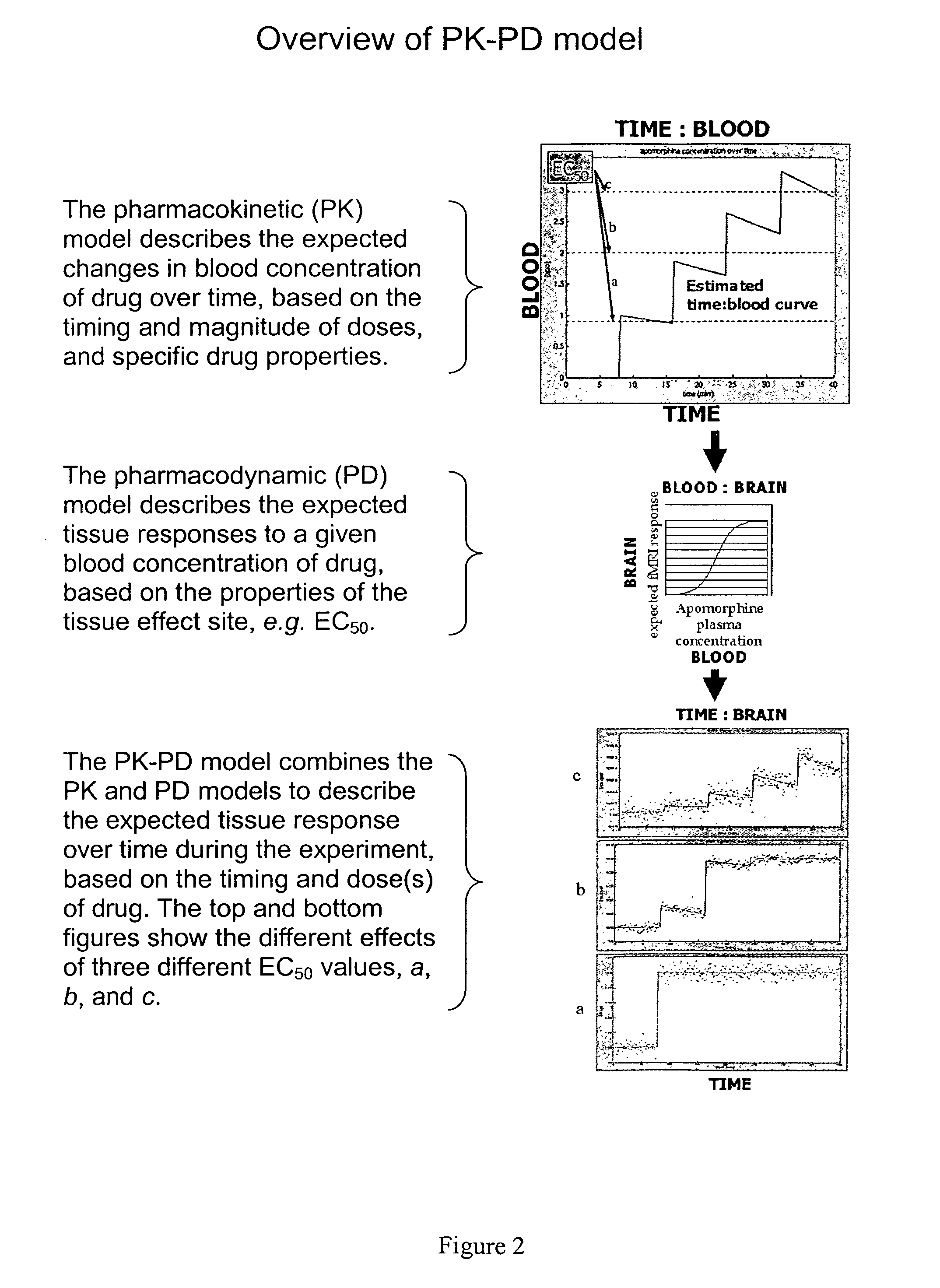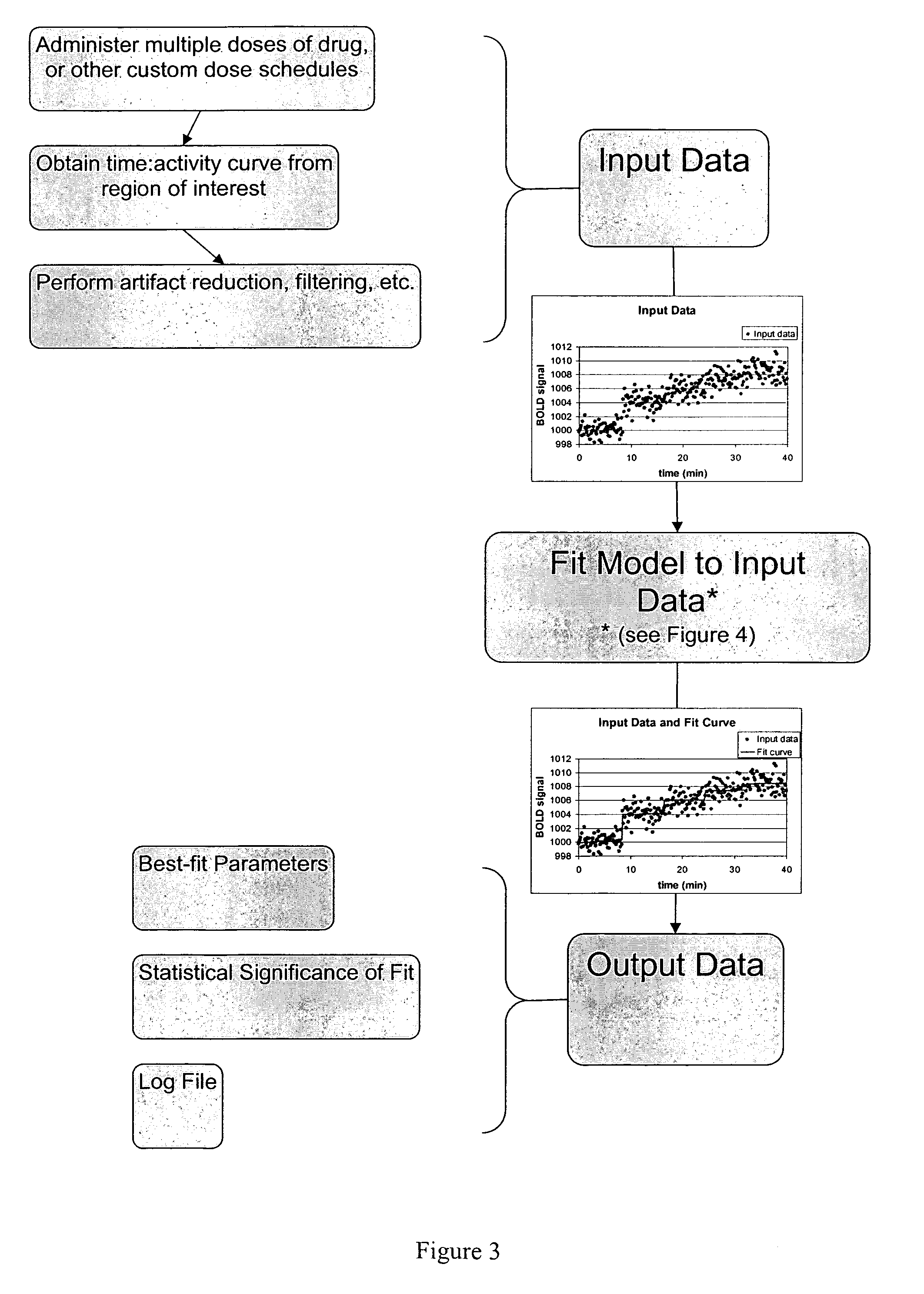Methods for medicinal dosage determination and diagnosis
a technology of dosage determination and diagnosis, applied in the direction of chemical property prediction, separation process, instruments, etc., can solve the problems of reducing the efficacy of dopaminergic ligands, difficult to determine the effect of dopaminergic ligands on the brain, and similar problems present in many of the currently used dopaminergic ligands, etc., to achieve the effect of short space of tim
- Summary
- Abstract
- Description
- Claims
- Application Information
AI Technical Summary
Benefits of technology
Problems solved by technology
Method used
Image
Examples
example 1
Introduction
[0091]We tested the performance of the methods and system described in this application using simulated data.
[0092]Predicted time-imaging curves tissuemodel(t) were generated for a wide range of plausible values for EC50, half-life, and other PK-PD model parameters. A value of Emax=10 was used for all simulations. Gaussian noise was added to tissuemodel(t) to better reflect real-world situations. A random noise function of time was generated 1000 times for each level of noise (quantified as the standard deviation of the noise for comparison to the known Emax) to allow testing of sensitivity and specificity of the curve-fitting methods.
[0093]FIG. 7 shows examples of tissuemodel(t) (solid line) and the sum of tissuemodel(t) and noise (dots) for different levels of noise. It is apparent that at high levels of noise, curve fitting will be difficult.
[0094]To test how likely the curve-fitting procedure was to report a fit to data in the absence of an (intentional) signal, nois...
example 2
[0109]To determine how the noise levels in the simulation data just described correspond to realistic biological data, we acquired data using BOLD-sensitive fMRI imaging of an anesthetized monkey with administration of the dopamine agonist SKF82958.
[0110]Experiments were approved in advance by the Washington University Animal Studies Committee and due care was exercised to prevent discomfort to the animal. During imaging sessions the animal's health was monitored by veterinary staff from the Washington University Division of Comparative Medicine. Two male M. fascicularis monkeys were studied.
[0111]Imaging was done while the animals were ventilated with 1.5% isoflurane in oxygen.
[0112]We obtained repeated whole-brain BOLD-sensitive fMRI images at a repetition interval of one every 3 seconds over a 40-minute period.
[0113]At 10 minutes into the imaging session a steady-rate, slow intravenous infusion of the dopamine D1 agonist. SKF82958 was commenced finishing at 15 minutes, with a tot...
example 3
Introduction
[0118]This example describes the implementation and testing of a pharmacokinetic-pharmacodynamic model for analysis of functional MRI data. The data illustrates mapping and quantifying a brain BOLD response to an acute dose of apomorphine in living humans.
[0119]Many important neurological and psychiatric illnesses involve abnormalities of dopamine function. An in vivo method to measure dopaminergic system sensitivity would benefit diagnosis and research. Positron emission tomography (PET) has been used, to measure regional cerebral sensitivity to dopamimetic challenges, but PET is not ideal for longitudinal studies or for research in children.
Methods
[0120]Regulatory Approval
[0121]Approved by FDA (IND #62999, 63000) and WUSM Human Subjects Committee (IRB). Subjects gave written informed consent.
[0122]Study Population.
[0123]6 normal control and 9 Parkinson's disease (PD) patients were selected to participate in the study.
[0124]Study Day Overview
[0125]The PD patients attend...
PUM
 Login to View More
Login to View More Abstract
Description
Claims
Application Information
 Login to View More
Login to View More - R&D Engineer
- R&D Manager
- IP Professional
- Industry Leading Data Capabilities
- Powerful AI technology
- Patent DNA Extraction
Browse by: Latest US Patents, China's latest patents, Technical Efficacy Thesaurus, Application Domain, Technology Topic, Popular Technical Reports.
© 2024 PatSnap. All rights reserved.Legal|Privacy policy|Modern Slavery Act Transparency Statement|Sitemap|About US| Contact US: help@patsnap.com










